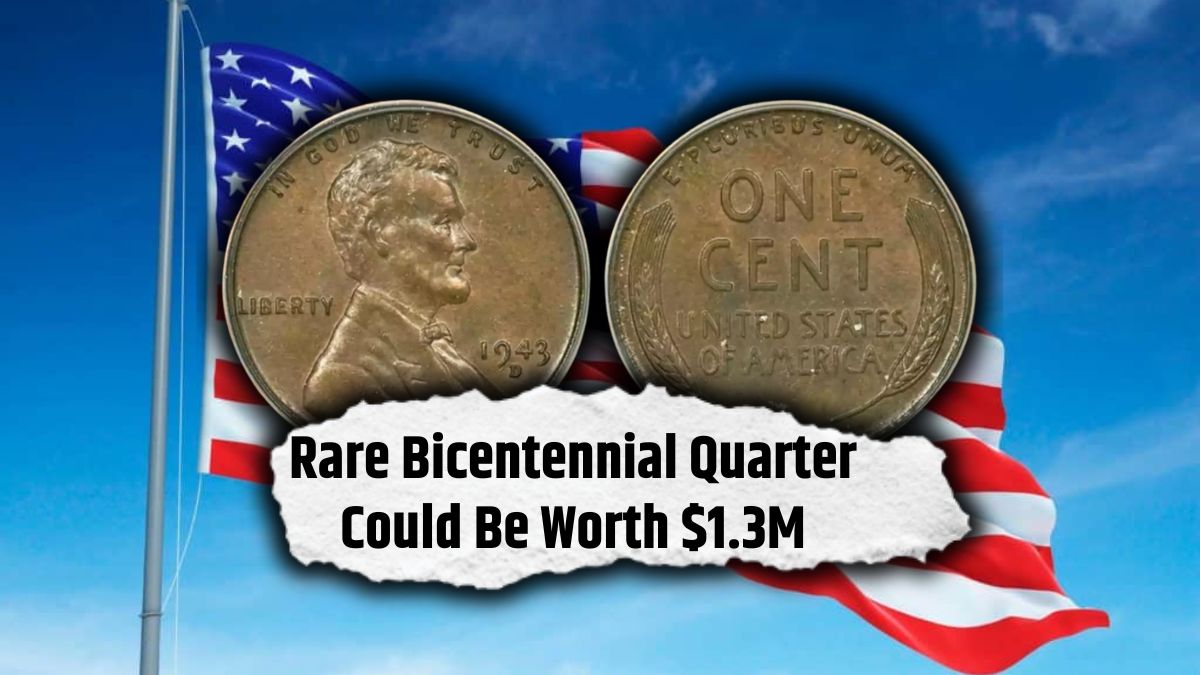The Rare Bicentennial Quarter has become a hot topic in numismatic circles once again. Initially released to mark America’s 200th anniversary of independence, these quarters—minted in 1975 and 1976—are more than just pocket change. Today, some of these coins are rumored to be worth thousands or even millions, depending on their condition, composition, and minting errors.
But what truly sets these coins apart? This in-depth guide uncovers the history, design, rare variations, and valuation factors of the 1976 Bicentennial Quarter and reveals what makes some of them incredibly valuable.
The Historical Background
In celebration of the U.S. Bicentennial in 1976, the U.S. Mint made a bold move by altering the design of the iconic Washington Quarter for the first time. These special coins were issued in 1975 and 1976, but all bear the dual date “1776–1976”—a unique feature that adds to their historical significance.
Rather than release coins marked “1975,” the Mint decided to issue all Bicentennial coins with this dual date to emphasize the nation’s 200-year journey since independence.
Obverse Design – George Washington with a Twist
The front (obverse) of the coin still features George Washington’s familiar portrait, but with the “1776–1976” date beneath it. This marks a symbolic departure from standard coins and reflects two centuries of American independence.
Reverse Design – Liberty Bell Over the Moon
The back (reverse) of the coin features a striking design by Jack L. Ahr, showcasing the Liberty Bell superimposed over the Moon—symbolizing freedom and space-age progress. The inscriptions include:
- “UNITED STATES OF AMERICA”
- “E PLURIBUS UNUM”
- “QUARTER DOLLAR”
The design was selected through a national competition, making it a culturally significant addition to U.S. coinage.
Key Varieties of the Bicentennial Quarter
Not all Bicentennial Quarters are created equal. Several versions exist, and understanding them is crucial for determining value:
Mint Mark Locations
- Philadelphia (No Mint Mark)
- Denver (D)
- San Francisco (S)
Metal Composition
- Copper-Nickel Clad: Most common in circulation.
- 40% Silver: Found in special collector sets; significantly more valuable.
Special Editions and Error Coins
- Proof Coins: Made for collectors with mirror-like finishes.
- Error Coins: Includes double die errors, misstrikes, and off-center coins.
- Mint Sets: Some quarters were issued in official 1976 Mint Sets, enhancing their appeal.
What Determines the Value of a Bicentennial Quarter?
Many factors influence how much a Bicentennial Quarter is worth:
Metal Type
- 40% Silver Quarters are more valuable than clad (copper-nickel) versions.
Mint Mark and Origin
- Coins from San Francisco (S), especially silver proof editions, are in high demand.
Coin Condition and Grading
- Coins graded MS-65 or higher by agencies like PCGS or NGC can fetch hundreds or more.
- Flawless MS-70 coins are rare and may sell for several thousand dollars.
Minting Errors
- Quarters with double die strikes, off-center printing, or other anomalies can dramatically increase in value.
Rarity and Demand
- Limited mintages, special collector editions, and proof coins all contribute to increased market demand.
Real-World Values: Bicentennial Quarters That Sold for Thousands
While many Bicentennial Quarters are still worth face value, some have fetched astonishing prices:
- Standard Proof Silver Quarters: Often sell for $10 to $50.
- Error Coins: Depending on rarity and type, can range from hundreds to thousands.
- High-Grade Coins: Some MS-70 examples have sold for over $3,000 at auctions.
The claim of a $1 billion valuation is not factual—it likely stems from internet myths or misrepresented auction listings. Still, legitimate high-grade and error coins are known to sell for life-changing amounts.
How to Identify a Rare and Valuable Bicentennial Quarter
To determine whether your quarter is valuable, follow these steps:
1. Check the Mint Mark
- Look for “S”, “D”, or missing mint marks.
2. Inspect the Coin’s Edge
- Silver quarters typically have a solid silver edge, whereas clad coins show a copper stripe.
3. Look for Errors
- Check for doubling, off-center strikes, and misprints under magnification.
4. Evaluate the Condition
- The fewer the scratches, dents, or wear, the more valuable it is.
- A coin in mint condition can significantly increase your return.
5. Get a Professional Grading
- Services like PCGS or NGC can officially certify your coin’s grade and authenticity—key factors in pricing.
FAQs About Bicentennial Quarter Value
Q1. Are all Bicentennial Quarters valuable?
No, the majority are worth their face value. However, silver editions, error coins, and graded coins can be worth hundreds or thousands.
Q2. How do I know if I have a silver Bicentennial Quarter?
Check for an “S” mint mark and a solid silver edge (no copper stripe).
Q3. What errors make these quarters valuable?
Look for double die errors, off-center strikes, and other minting flaws.
Q4. Where can I sell my rare quarter?
You can sell through coin dealers, online auction platforms, or specialty numismatic events.
Q5. Is it possible for a Bicentennial Quarter to be worth $1 billion?
Highly unlikely. However, certain rare coins have sold for six or seven figures, depending on rarity and historical importance.






